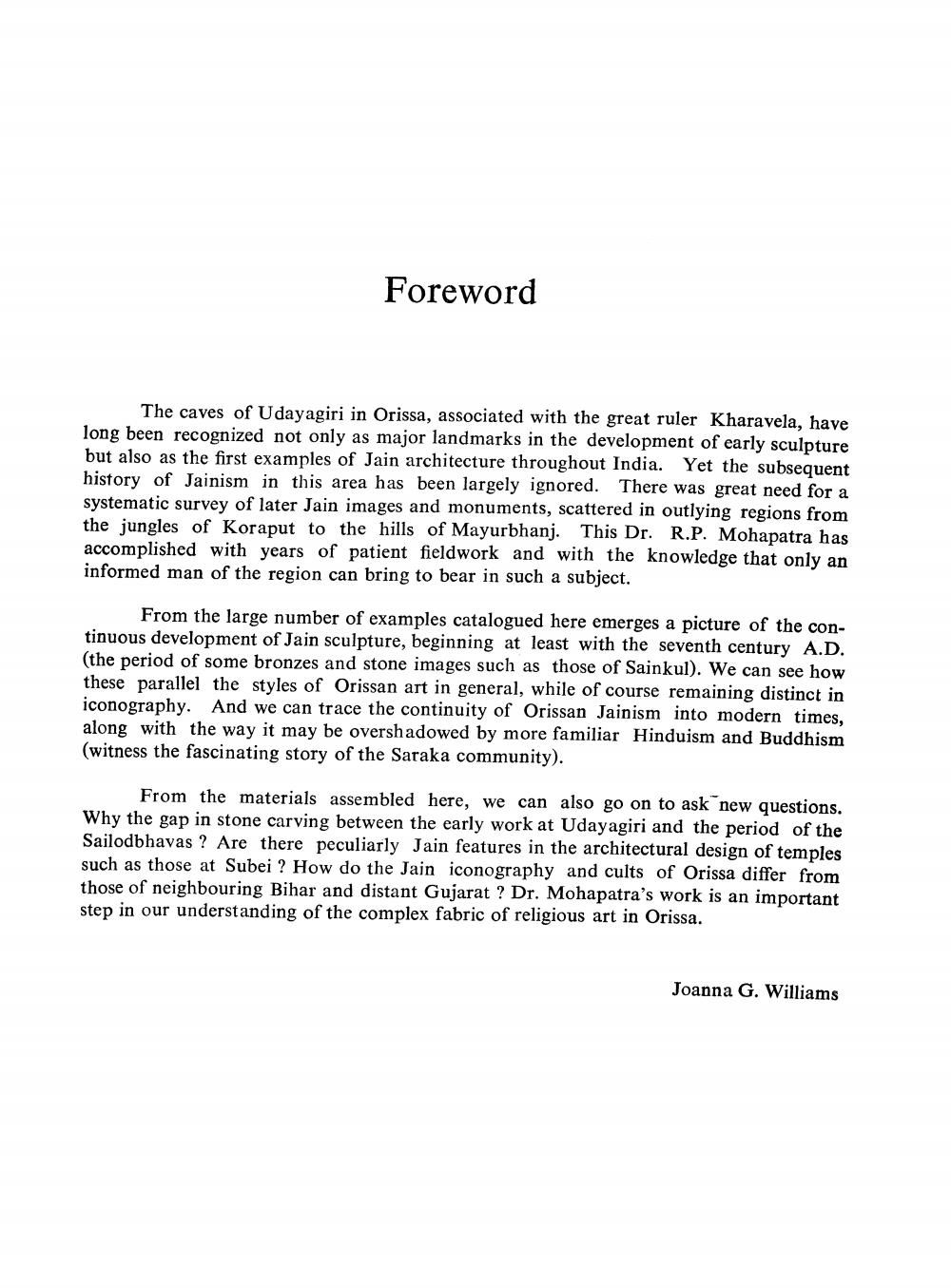________________
Foreword
The caves of Udayagiri in Orissa, associated with the great ruler Kharavela, have long been recognized not only as major landmarks in the development of early sculpture but also as the first examples of Jain architecture throughout India. Yet the subsequent history of Jainism in this area has been largely ignored. There was great need for a systematic survey of later Jain images and monuments, scattered in outlying regions from the jungles of Koraput to the hills of Mayurbhanj. This Dr. R.P. Mohapatra has accomplished with years of patient fieldwork and with the knowledge that only an informed man of the region can bring to bear in such a subject.
From the large number of examples catalogued here emerges a picture of the continuous development of Jain sculpture, beginning at least with the seventh century A.D. (the period of some bronzes and stone images such as those of Sainkul). We can see how these parallel the styles of Orissan art in general, while of course remaining distinct in iconography. And we can trace the continuity of Orissan Jainism into modern times, along with the way it may be overshadowed by more familiar Hinduism and Buddhism (witness the fascinating story of the Saraka community).
From the materials assembled here, we can also go on to ask new questions. Why the gap in stone carving between the early work at Udayagiri and the period of the Sailodbhavas? Are there peculiarly Jain features in the architectural design of temples such as those at Subei? How do the Jain iconography and cults of Orissa differ from those of neighbouring Bihar and distant Gujarat ? Dr. Mohapatra's work is an important step in our understanding of the complex fabric of religious art in Orissa.
Joanna G. Williams




